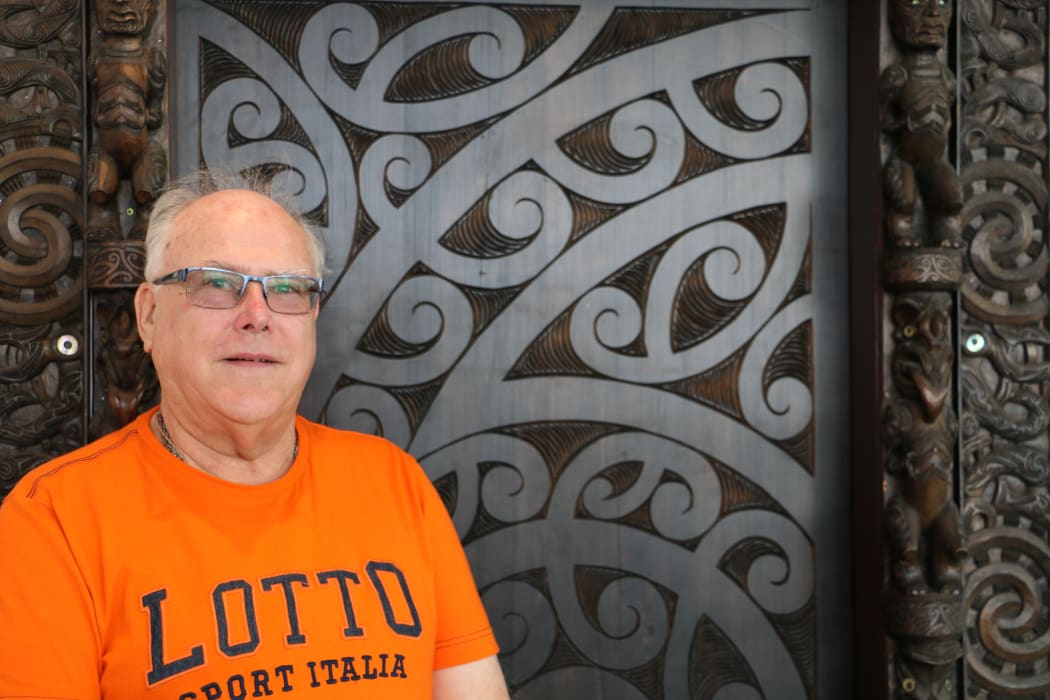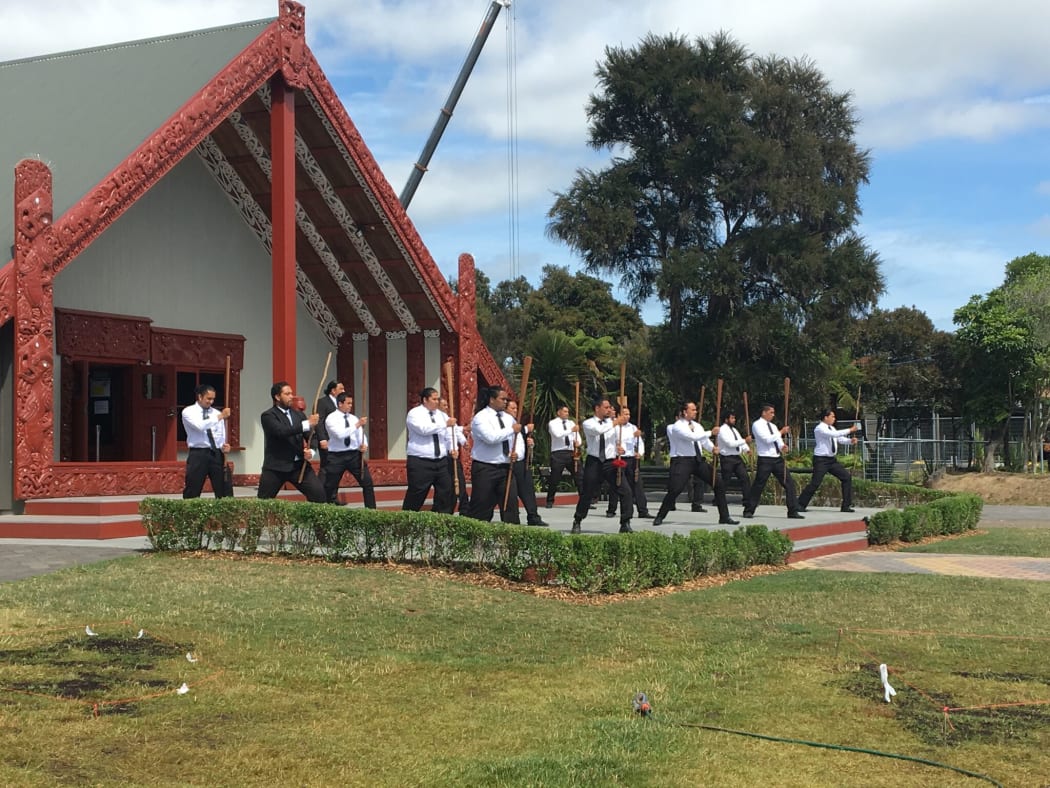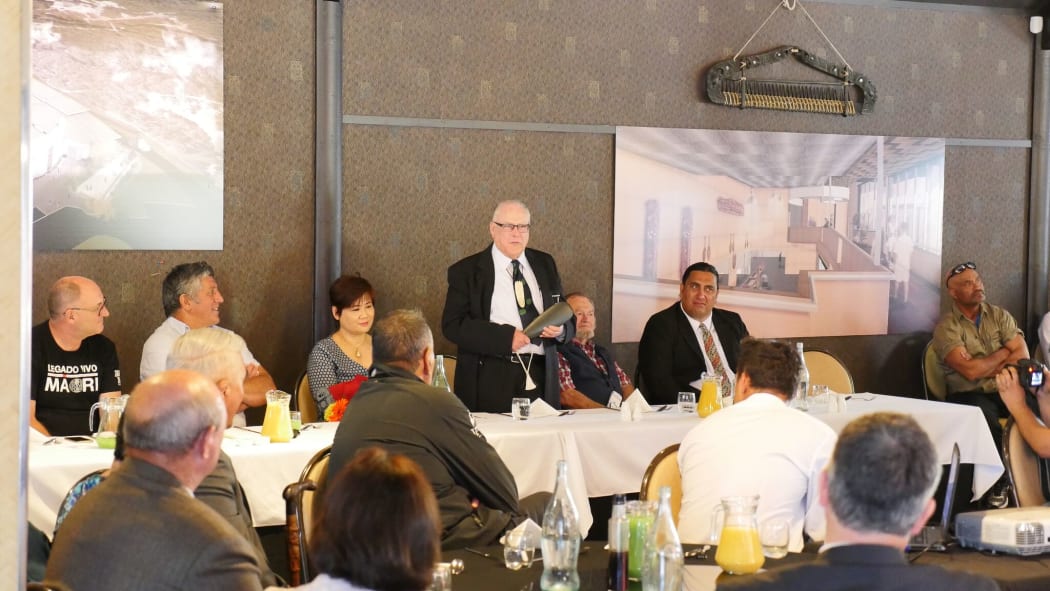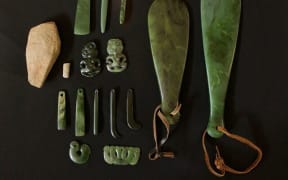Te Ahi Kaa profiles people of notable skill in the new series He Tangata Pūkenga. This week, Tohunga Whakairo (master carver) Clive Fugill nō Tainui, Ngāti Ranginui and Ngai te Rangi shares his story.

Tohunga Whakairo Clive Fugill. Photo: RNZ/Justine Murray
When Clive Fugill enrolled at the Carving School of The New Zealand Arts and Crafts Institute (NZMACI) his identity was questioned because he didn’t look Māori.
It was only when his father took in a photo of five generations of his family, that the board was convinced of his heritage. In the photo was Clive’s great-great-great grandmother who was full-blooded Māori and wore moko kauae (tattooed chin).
It’s a story that Clive recalls like it was yesterday, he clearly remembers his father’s resentment about the debacle.
That was back in 1966 and Clive has been at NZMACI (now known as Te Puia) ever since.
On 16 January this year, Clive's colleagues, students and friends celebrated his long service and outstanding contribution to the carving school.
Taking up the Chisel
Clive was only nine years old when he started carving in the woodshed, his parents had given him a tool set. But it was a camping trip up north and holding a Patu Onewa (Stone Patu) that would spark his curiosity about how they were made. His father took the family to a private museum in Dargaville – which turned out to be a converted bedroom.
“[The owner] had one of everything, all the cloaks. He had toki, stone adze, a big collection of kauri gum and all sorts in there. He had these cases in the middle of the floor and had two mere, hei tiki and he had this patu onewa, made out of black stone… he let me hold them and I held this patu and that just blew me away, the shape, the form and the feel of this weapon and how it was made. It’s fascinated me for years.

The Haka pōwhiri performed at Rotowhio marae as part of the gathering to honour Clives service and work. Photo: Supplied
Mentors
"The person that doesn’t make a mistake never learns everything. The guy who makes all the mistakes will learn everything."
Hone Taiapa (1911 – 1979) imparted these words to his young apprentices and said that there is always a way of fixing a mistake. John’s brother Pine Taiapa (1901 – 1972) was also a carver and both brothers worked together.
“It was always said that Pine was the mouthpiece and John was the hands, and when they were together Pine would do the korero, and John would do the demonstration... they worked on houses all over the country. it’s said that Pine worked on at least 105 meeting houses, and John probably worked on about 70 all up. With John, every single house was a masterpiece. He was unique in that he could build a meeting house from the concrete foundation right til the last stick of carving, tukutuku, kowhaiwhai and everything in it.”
Projects
Since 1983, Clive has held the position of Tohunga Whakairo (Master Carver) and worked on a number of projects around the country. He has travelled extensively overseas to Thailand, Japan and the United States to share his work.
“We have helped a lot of iwi with houses and the teaching of students from each iwi. We have contributed immensely to teaching young men to carve and taking that knowledge back to their own. Some have worked on houses in their own areas to keep the art alive”.
The Te Matatini Stage was carved by a team at NZMACI in partnership with Te Matatini Society. It is 30 metres in length and 13 metres in height. The stage was carved using native timber and Kauri. Clive says a wall from the carving school have to be removed so the wood could be worked on.

Clive Fugill's book Te Toki me te Whao was released at the end of last year. Photo: Supplied
Clive’s book Te Toki me te Whao – The Story and Use of Māori Tools was published in 2016. It features 80 sketch drawings by Clive, along with photos and genealogy diagrams.
He says that as his career started at the institute he was conscious of passing down the knowledge that he acquired – too many times the old people would die and take that knowledge with them.
Clive Fugill on Māori carving tools
Clive Fugill, Master Carver at the NZ Maori Arts & Crafts Institute in Rotorua, learned his craft in the late '60s. His new book examines the creation and evolution of implements like the toki (adze)… Audio, Gallery


